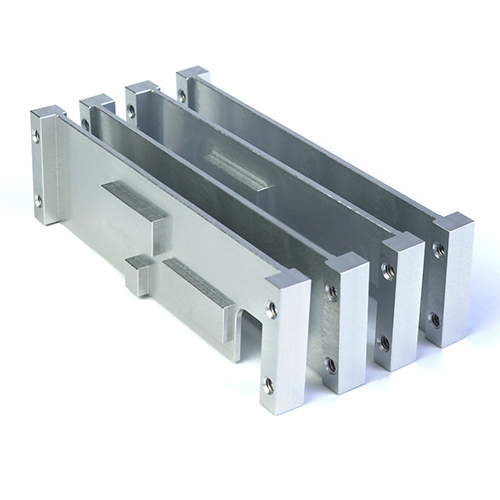
As industries worldwide push the boundaries of innovation, processing and manufacturing metal parts has become more critical than ever. From precision engineering to sustainable production, understanding the intricacies of metal part manufacturing is a game-changer for businesses looking to stay competitive. Whether you’re in aerospace, automotive, electronics, or renewable energy, mastering the latest techniques in metal part production can give your company the edge it needs to thrive in today's fast-paced market.
What is Metal Parts Processing and Manufacturing?
At its core, metal parts processing involves transforming raw metal materials into functional, durable components used in everything from machines to consumer products. This includes everything from the initial design and material selection to the machining, assembly, and finishing processes that turn metal into a finished part. Manufacturing metal parts requires a mix of technology, precision, and craftsmanship, with processes tailored to meet specific industry requirements.
Key Processes in Metal Parts Manufacturing
Casting and Molding: In this stage, molten metal is poured into molds to create parts with complex shapes. Commonly used for mass production, casting is ideal for parts with intricate designs and tight tolerances. Materials like aluminum, steel, and iron are often cast to create everything from engine components to structural elements.
Machining: CNC (Computer Numerical Control) machining is one of the most advanced methods for shaping metal parts. Using automated machines, manufacturers can precisely cut, mill, drill, and grind metal components to meet exact specifications. CNC machining allows for high precision and flexibility, making it a staple in industries requiring tight tolerances, like aerospace and medical device manufacturing.
Additive Manufacturing (3D Printing): This cutting-edge process involves building parts layer by layer using metal powders. 3D printing allows for rapid prototyping and the creation of complex geometries that would be difficult or impossible to achieve with traditional methods. It’s revolutionizing industries that require quick, customized parts and prototypes, including automotive, aerospace, and healthcare.
Stamping and Forging: These techniques involve shaping metal by applying force. Stamping uses dies to cut, punch, or bend sheet metal into desired shapes, while forging involves shaping metal through compressive forces, often in high-temperature environments. Both processes are essential in high-volume production, especially for automotive and heavy machinery.
Welding and Joining: Once individual metal components are fabricated, they are often joined together using welding, soldering, or brazing. These processes fuse metal parts together, creating strong, durable bonds that are crucial for the integrity of the final product.
Finishing: The final step in metal manufacturing often involves surface treatments such as coating, plating, or polishing. These treatments enhance the metal's appearance, prevent corrosion, and improve durability, ensuring that parts meet both functional and aesthetic standards.
Key Industries Driving the Demand for Metal Parts
Aerospace and Defense: The aerospace sector relies on lightweight, high-strength metals such as titanium and aluminum for components like aircraft engines, frames, and landing gear. With the growing focus on space exploration and defense technology, the need for high-performance, precision-crafted metal parts is increasing.
Automotive: From engine blocks to structural components, the automotive industry depends heavily on metal parts. As the demand for electric vehicles (EVs) grows, manufacturers are looking for specialized metal parts that enhance battery performance and reduce weight, improving efficiency and safety.
Medical Devices: The medical industry requires metal parts that are biocompatible, durable, and precise. Components for surgical instruments, implants, and diagnostic equipment need to be manufactured with exacting standards to ensure patient safety.
Renewable Energy: With the global push for cleaner energy sources, the renewable energy industry is creating demand for metal parts used in wind turbines, solar panels, and other green technologies. These parts must be able to withstand harsh environmental conditions while maintaining efficiency.
Conclusion: The Future of Metal Parts Processing is Bright
As industries continue to evolve, the importance of mastering metal parts processing and manufacturing cannot be overstated. Whether it’s creating the next-generation of automotive components or innovating in aerospace technology, understanding how to process and produce metal parts with precision and efficiency is key to staying competitive in an increasingly complex global market. With ongoing advancements in technology and manufacturing practices, the future of metal parts manufacturing is more exciting than ever, offering endless possibilities for those ready to embrace innovation.
By staying ahead of the curve in processing and manufacturing metal parts, businesses and engineers can not only optimize their production lines but also drive the next wave of technological breakthroughs in their industries. The future of manufacturing is here—are you ready to learn about it?
Post time: Nov-14-2024




